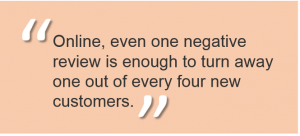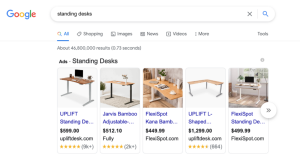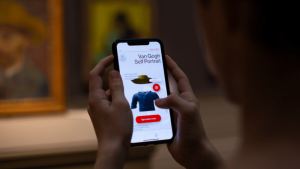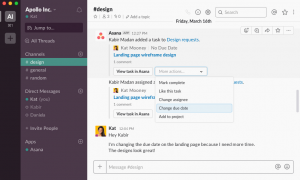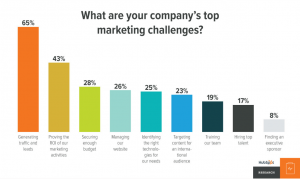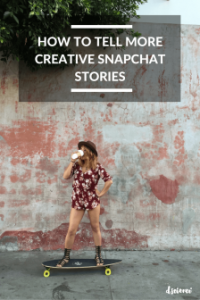
Hashtags have only gained popularity on social media within the past few years. By the end of 2013, 97% of the world’s top brands on social media were using hashtags. From there, hashtags started popping up for TV shows, celebrity promotions, and other mainstream media that encouraged people to share their thoughts online.
Brands can use the same hashtag over multiple social platforms to initiate conversation, harness support, and build brand identity. Plus, tweets with hashtags are 55% more likely to be retweeted.
All statistics point to the fact that you should be using hashtags in your marketing, and developing a hashtag strategy isn’t as difficult as you might think.
Developing Your Hashtag Strategy
Like every aspect of marketing, you need to develop a strategy for hashtag use; it’s an important part of social media success. Without developing a strategy, you risk damaging your reputation by associating yourself with the wrong causes, or offending users and spamming an irrelevant hashtag.
To create a hashtag strategy:
- Figure out Your Identity. What do you want your company to be known for? Decide on your company’s niche and identity, and then use hashtags to develop your brand.
- Draft Your Hashtags. Brainstorm some ideas and make a list of the possibilities.
- Research Your Hashtags. This is the most important step in developing your strategy. You want to make sure your hashtags aren’t already in use, and you need to make sure they aren’t associated with something you might not want to link your brand to.
- Choose a Hashtag. From your list, decide which hashtags you want to use. For a campaign, choose one hashtag. If you’re using a hashtag for your brand, stick with a slogan hashtag and a brand name hashtag.
- Use Your Hashtag. Make sure you use your hashtag consistently across all social platforms, and use it often.

The most important step of the process is to make sure the hashtags you choose aren’t already associated with another brand, cause, or too common to associate with just your company. You also want your hashtag to be creative enough to have staying power, so it won’t just fizzle out after a day.
Types of Hashtags
Most brands aren’t shy about using hashtags, but there are several different types that brands can use in their marketing strategies.
Campaign Hashtags
Campaign hashtags are simply that: Hashtags you associate with a current campaign. Make sure your campaign hashtag is specific to that campaign (meaning you don’t use it for something else as well), and use it everywhere. It’ll help generate more engagement.
You can also use a campaign hashtag to promote a contest. Followers can use that hashtag and share it with friends to enter.
Just remember that campaign hashtags are time-sensitive, so once the campaign ends, it’s time to retire that hashtag.
Burt’s Bees is one brand who hasn’t been shy about using any of the different types of hashtags. It’s an earth-conscious beauty company that specializes in natural products, ranging anywhere from body lotion and face wash to lipstick and cuticle care — all while sending zero waste to the landfills.
Burt’s Bees made great use of a hashtag campaign to help the disappearing honey bees. Every time someone tweeted without the letter B and used #BringBackTheBees, they pledged to plant 1,000 wildflowers (with the goal of planting 1 billion).
Source: Twitter
Burt’s Bees took advantage of the hashtag everywhere. It was pinned to the top of their Twitter account and on their Facebook profile, Instagram, and website; it was even on some of the special edition lip balms they sold.

Source: Burt’s Bees
Not only did they add the hashtag to physical products, but they also stopped using the letter B in all their posts, and even their name and logo, to show what it’d really be like without “bees.”

Source: Facebook
Burt’s Bees also made great use of the social media best practice of responding to people who used their hashtag. When I retweeted Burt’s Bees’ #BringBackTheBees tweet, they sent me a thank you tweet that was so adorable, I didn’t even care it was an auto-response.

Source: Twitter
Burt’s Bees’ campaign is a great example of how you can use a campaign hashtag to spread the word and boost a campaign to its peak effectiveness. Over 14,000 people have retweeted their campaign tweet, and the hashtag itself has been used over 360,000 times. Plus, the hashtag allowed them to run a cross-channel campaign since they kept the same hashtag on every site and even some products.
Tip: Get physical with campaign hashtags and make sure they’re everywhere. (click to tweet)
Brand Hashtags
A brand hashtag is usually just a brand’s name or company tagline, such as #BurtsBees (although they made it #urtsees for the campaign). Before you decide that you’re going to just use your brand’s name, make sure it’s not a common phrase. If it is, you might want to use a tagline. Old Spice, for example, uses the tagline #smellegendary on their social media accounts.

Source: Twitter
Whatever you decide on for a brand hashtag, use it across every channel. On your social account, website, even on any physical gear or products. It encourages sharing and lets customers or followers know what to use when sharing.
Tip: Be consistent. Associate a hashtag with your brand and encourage customers to use it. (click to tweet)
Trending Hashtags
Trending hashtags are what everyone is talking about. On desktop, you can find them on the left side of Twitter and the right side of Facebook, or by selecting the search option in the Instagram, Facebook, or Twitter app (they appear as suggested searches).
When you see a trend related to your business and product, you can engage in the conversation by using the hashtag. This can help you network with others who have the same interests, and become an well-known influencer in your industry.
But, trending hashtags can also humanize your brand. Some trending hashtags will give you the chance to let your personality and sense of humor show. Plus, since they’re what’s currently being talked about, engaging with them can give you a ton of exposure.
There are also usually trending hashtags during holidays, so you can post about those to spread some cheer with your brand.

Source: Twitter
You have to be quick to use trending hashtags before they fall out of style. But remember, you still want to be sure you know what the trending hashtag is related to before you use it. Research the context of the hashtag before you post.
Avoid using any hashtags about a worldly conflict or a news story to promote your brand, such as when Kenneth Cole used #Cairo to promote their new spring collection, rather than discuss the uproar in Egypt.

Source: Mashable
It doesn’t always have to be a worldly conflict or news story, either. The hashtag #WhyIStayed was created to start a discussion about why men and women stayed with an abusive partner. DiGiorno Pizza could have avoided this damaging tweet with just a little bit of research first.

Source: Buzzfeed
You can visit sites like Trends Map to see what’s trending and where. What the Trend is another site where you can see trending hashtags, but it also tells you why it’s trending. Use TWUBS to save hashtags, so you can see all the hashtags of interest to you on one page.
Tip: Do your research before using any trending hashtags. (click to tweet)
Content Hashtags
Content hashtags are relevant to the content of your posts or business. They’re not branded or trending, but instead are always relevant and used steadily.
For example, Burt’s Bees is known for their skin and body care products, so the hashtags like #lipstick and #skin frequent their page.

Source: Twitter
There are several different categories of content hashtags, such as product, lifestyle, and location hashtags. Location hashtags can be great to help target your post to others who are nearby and may be engaging with the same hashtag. It can be a valuable alternative to geolocated paid advertising if you’re a small business who may not have a large advertising budget.
Tip: Use hashtags that are relevant to the content of your posts or your products/company. (click to tweet)
Hashtag Best Practices
- Speak Clearly. Capitalize the first letter of each word in the hashtag so it #LooksLikeThis and #notlikethis. It’ll make the hashtag easier to read.
- Use Letters and Numbers Only. Punctuation in a hashtag actually breaks up the hyperlink, so only the part directly connected to the hashtag will link to a search.
- Keep It Short. Remember, your followers have to type the hashtag, so make sure it isn’t difficult to type or prone to common spelling errors. You’ll miss out on being able to track the hashtags that aren’t spelled correctly.
- Don’t Overdo It. One hashtag? Great! Two? Good! Use three or more hashtags though, and you’re risking user engagement dropping by more than 17%.
- Get Physical. Put your hashtags on any relevant social media images, but also feature it on company gear (like a t-shirt) or signs and non-digital advertisements (like a billboard).
- Do Your Research. Before you jump on the trending hashtag bandwagon, make sure you know what it’s for, and make sure you’re using it in an appropriate manner.
- Measure Your Success. Use a service like Hashtracking or Simply Measured for a real-time analysis of how your hashtags are performing.
(109)

